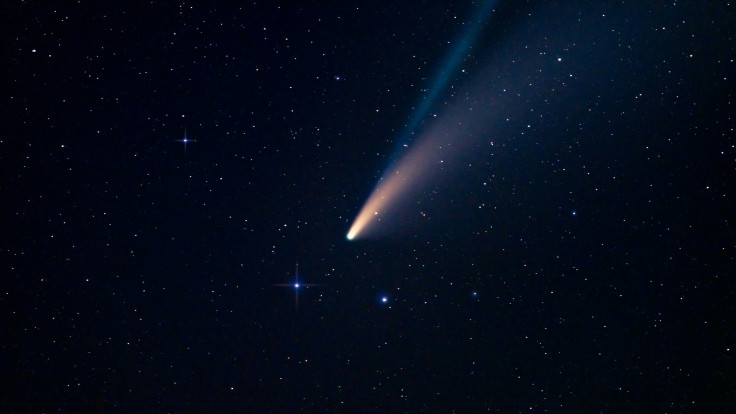
The interstellar comet 3I/Atlas has made its dramatic return to our skies — and for the keen-eyed among us, it's offering a rare glimpse into the distant past of our Universe.
This icy wanderer, believed to have formed around 10 billion years ago, has travelled light-years from beyond our Solar System to give stargazers on Earth a fleeting spectacle.
As our planet moves towards the comet and 3I/Atlas drifts back from the Sun, the coming weeks will be a golden window for viewing it. The best part? You don't need an expensive telescope to join in — even modest equipment or a pair of high-quality binoculars will do.
How And When To Spot 3I/Atlas
'November will be the ideal month to observe Comet 3I/Atlas, a rare interstellar visitor that will shine near Venus and the bright star Spica in Virgo,' explained Dr Franck Marchis, Senior Astronomer and Director of Citizen Science at the SETI Institute, and Chief Science Officer and co-founder of Unistellar, in an interview with NewsBreak.
According to Marchis, around 3 November, the comet will rise roughly two hours before sunrise. Its brightness could reach a magnitude of 10 — faint but observable through a telescope or good binoculars.
For those eager to locate it, Venus or Spica serves as a useful celestial landmark. And if you're uncertain where to look, stargazing apps like SkySafari, Stellarium, or Sky Tonight can help chart its position.
'Comets are unpredictable, so their brightness may change after perihelion — meaning this might be your best chance to catch it!' Marchis added.
Why The 3I/Atlas Observation Period Matters
Although 3I/Atlas approached no closer than 203 million kilometres (126 million miles) from the Sun, scientists were astonished to see a dramatic increase in its activity. This unexpected outburst has made it a more exciting target for astronomers and enthusiasts alike.
Its relatively low position on the horizon has posed a challenge for many professional observatories. However, this limitation presents a rare scientific opportunity for amateur astronomers: with a clear view and the right equipment, they could make valuable contributions to our understanding of this celestial visitor.
Global Citizen Science Efforts Behind The Comet's Study
Marchis highlighted a remarkable global collaboration underway. 'Working with SETI Institute scientists, Unistellar's global network of 25,000 citizen astronomers will capture real-time data to help researchers study the composition and trajectory of this visitor from beyond our Solar System.
Participants will be able to share their observations through the Unistellar app and contribute to ongoing research at the SETI Institute.'
These coordinated efforts represent a growing movement in citizen science, empowering ordinary stargazers to take part in research that was once accessible only to professional astronomers.
Don't Miss The Show — Even If Clouds Roll In
If cloudy skies spoil your plans, you won't be left out. The Virtual Telescope Project will soon stream live observations of 3I/Atlas, ensuring that no one misses their chance to witness this rare cosmic encounter.
So, whether through a telescope, a live stream, or the collective eyes of thousands of stargazers worldwide, 3I/Atlas promises to be one of the season's most captivating astronomical events — a symbol of curiosity, collaboration, and cosmic wonder.







